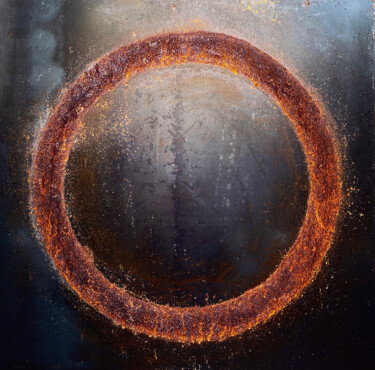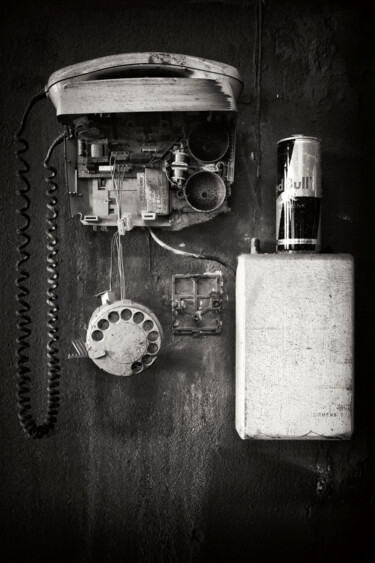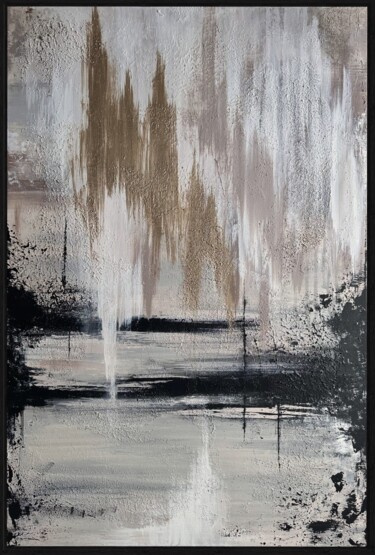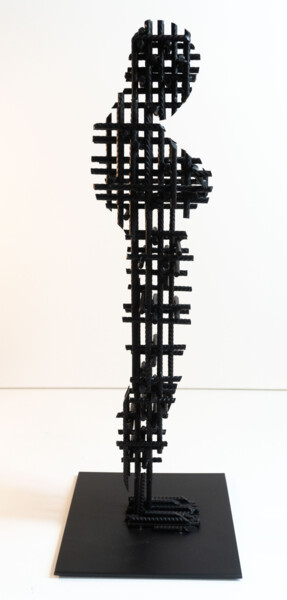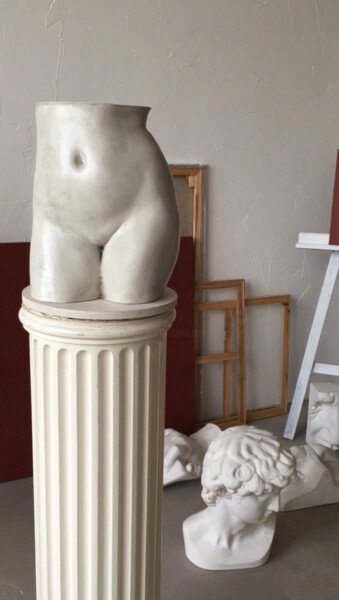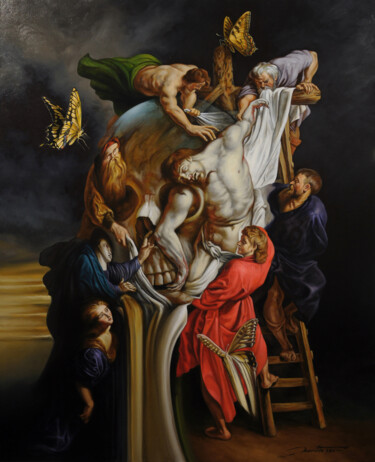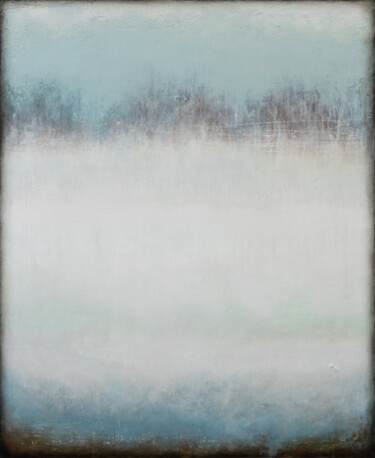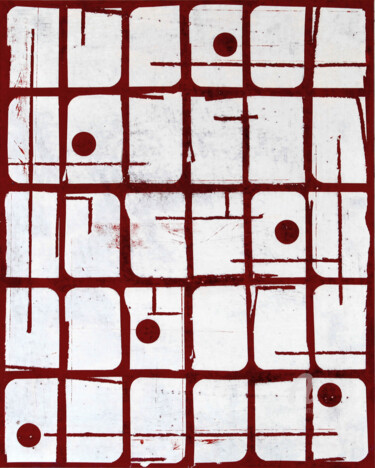I present to you the perfect guide to transform your home into a space with personality. If you dream of an industrial, baroque, minimalist zen, or Scandinavian style, here you will find ideas and inspirations to choose the works of art that perfectly complete the atmosphere. With practical advice and concrete suggestions, I will help you enhance your spaces and discover that artistic detail that will make your home truly yours
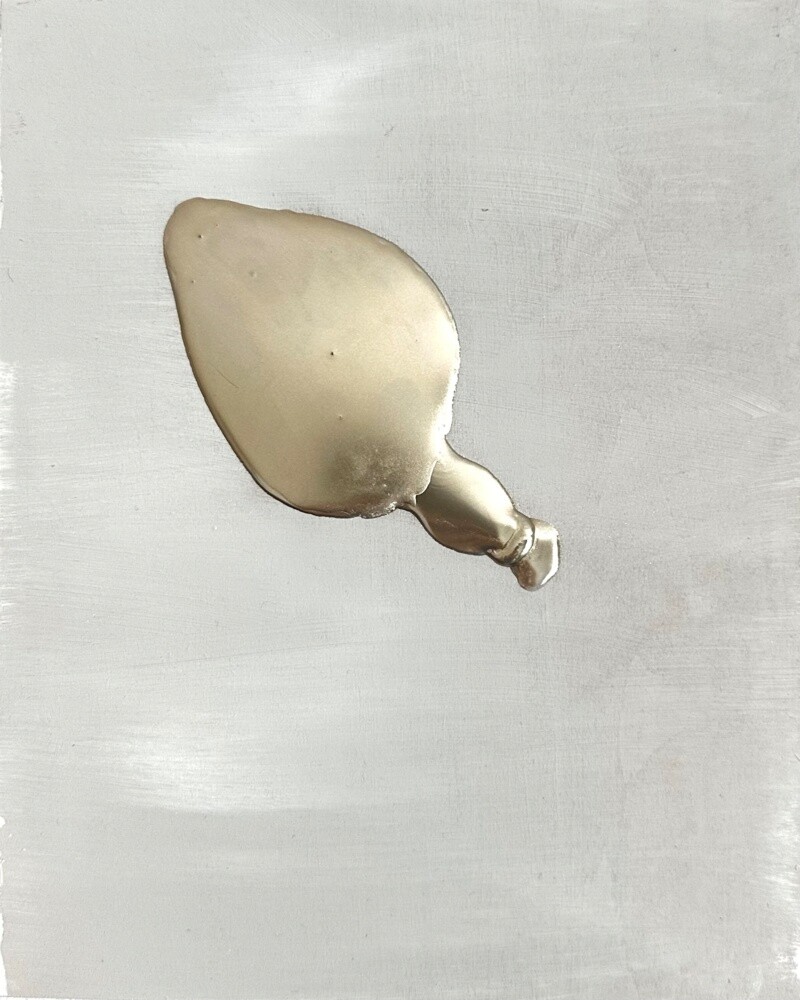 Concrete and Gold Vol. S-5 (2024) Painting by Roman Winter
Concrete and Gold Vol. S-5 (2024) Painting by Roman Winter
Industrial Decor: Iconic Elements and Ideal Works of Art
Industrial design originated in the 1950s in New York, utilizing abandoned spaces such as warehouses and factories. Creatives and artists like Andy Warhol, with his iconic Factory, transformed these locations into artistic studios and homes. From there, industrial decor gained popularity, reaching the mainstream audience through films and TV shows set in raw and authentic lofts. Today, the allure of this style is more relevant than ever, having even evolved into a version known as "industrial chic," which is less rustic yet equally evocative.
The industrial style is immediately recognizable for its iconic elements: raw walls, exposed brick, concrete, and metal, often found in large open spaces. This style aims to highlight what is typically hidden: pipes, beams, and visible installations that give the environment an authentic and unfiltered atmosphere. The colors are neutral and earthy, with a “grunge” appeal that marries durable materials like wood and metal. This design does not shy away from imperfections; instead, it embraces them to create a sense of history and authenticity.
Choosing industrial style means opting for a few essential pieces, preferably reclaimed or vintage, to recreate the rough yet welcoming atmosphere of a loft. Robust furnishings with geometric lines are perfect, while leather armchairs and sofas, wooden and metal chairs, and coffee tables made from reused pallets contribute to creating a unique environment. Pendant lights with exposed wires or large spotlights evoke the idea of factories and production, along with concrete or resin floors that complete the effect.
For such decor, the artwork should have a "raw" and modern imprint that reflects the authenticity of the space. Black and white photographs of urban landscapes or industrial images are ideal for this style. Abstract paintings on large canvases or prints featuring architectural subjects integrate seamlessly. Regarding mediums, works on metal, wood, or plexiglass enhance the raw and contemporary aspect. All these choices make the art part of the environment, completing the sense of integrity and character of industrial design. Now, let me show you the works I have chosen for your home!
 Industrial Chic No 5 (2024) Painting by Alessia Lu
Industrial Chic No 5 (2024) Painting by Alessia Lu
 DISTOPIA (2024) Painting by Luigi Profeta
DISTOPIA (2024) Painting by Luigi Profeta
In a spacious open space with industrial decor, bare and "raw," these two works find their perfect placement, integrating seamlessly with the surrounding structure. "Industrial Chic No 5" by Alessia Lu, with its texture reminiscent of metal plates and rivets, seems to have been extracted directly from an old factory: the deep black and the silver sheen evoke molten metal, a presence that celebrates urban aesthetics with a vintage touch. This piece, hung on a bare concrete wall, adds depth, evoking the very roots of industrial style.
Opposite, "Distopia" by Luigi Profeta represents an abandoned future city, where nature reclaims its spaces. The vision of a metropolis devoid of humans, with traces of a long-gone industrial era, enriches the space with a powerful narrative: the overlap between past and future, an invitation to reflect. The neutral tones of the artwork and the melancholic atmosphere blend with the environment, offering a perfect representation of the "realism" and the lived character that define industrial essence.
From the Seventeenth Century to Today: The Baroque Style in Modern Furnishings
The Baroque is an artistic, ideological, and cultural movement that originated in Italy around 1600 and spread throughout Europe until the mid-1700s. Initially considered an excessive and heavy style, the term likely derives from a medieval scholastic term referring to a complex yet somewhat artificial argument. Once a derogatory expression, the term was re-evaluated in the 19th century, and, with the contributions of art historian Heinrich Wolfflin, it is now recognized as one of the last great movements of European art.
The Baroque is characterized by deep theatricality and an expressiveness that engages the observer through the use of light and shadow, elaborate decorations, and dynamism. In contrast to the harmony of the Renaissance, this style favors contrast and movement, with elements that seem to extend into space. In architecture, the Baroque is distinguished by its characteristic curved lines, richly decorated surfaces, and monumental forms, often surrounded by lush gardens. In painting, it manifests in dramatic and realistic works, such as portraits, still lifes, and religious and mythological scenes, accentuated by an emotional and naturalistic component.
Choosing Baroque means favoring furniture and decorations that convey splendor and refinement. Furniture in this style is typically massive, decorated with intricate carvings and gilded or silvered details. Sofas and armchairs often feature upholstery in rich colors such as red, green, and blue. Walls may be enhanced with damask upholstery or wallpaper with floral patterns. Crystal drop chandeliers, gilded mirrors, and ornamental details complete the atmosphere, recreating that typical sense of opulence.
For Baroque decor, ideal artworks include oil paintings representing religious, historical, or mythological scenes typical of the period. Additionally, portraits and still lifes with strong realism and emotional intensity perfectly suit this style. It is also important to choose elaborate frames, rich in gold leaf and carvings, to add a touch of luxury and drama to the surroundings. Below, I present two works specifically designed in this style!
 Morpheus (2024) Painting by Amirata Winter
Morpheus (2024) Painting by Amirata Winter
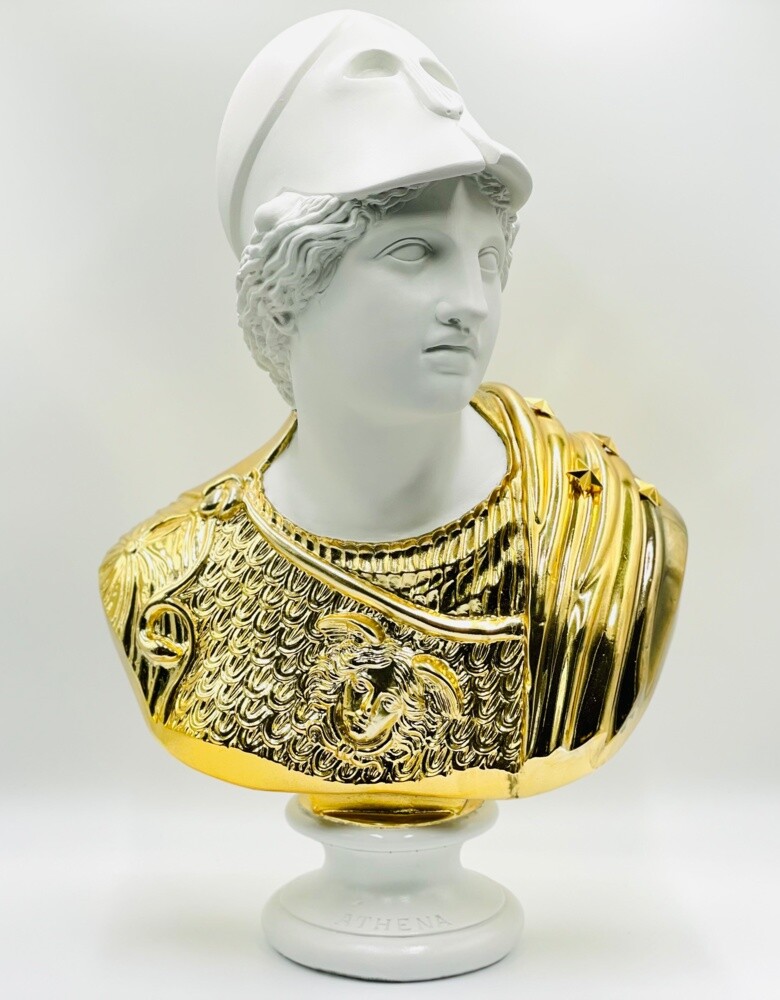 Gold Plated Athena (2023) Painting by Ahu Didem Kaya
Gold Plated Athena (2023) Painting by Ahu Didem Kaya
In a sumptuous salon adorned with Baroque decor, enveloped by damask walls and illuminated by crystal chandeliers, these two works find their natural placement, completing the space with elegance and theatricality. "Morpheus" by Amirata Winter, with its vibrant colors and meticulous details, depicts a dreamlike scene in which a leopard and a human figure coexist in perfect harmony. This painting captures the chiaroscuro and the drama typical of the style, evoking both power and grace while inviting the viewer to lose themselves in the delicate line between dream and reality.
On the opposite side, "Gold Plated Athena" by Ahu Didem Kaya, with its shiny gold armor, is perfect for an environment that celebrates luxury and refinement. The sculpture, with its gilded details shimmering under the light, stands majestically and recalls the classic features of the mythological goddess, enhancing the monumental and decorative spirit characteristic of this style. Thus, it becomes evident how both works enrich the environment, transforming it into a stage of Baroque art and beauty.
Zen Minimalism: The Art of Living with Simplicity and Serenity
The zen minimalist aesthetic combines modern minimalism with Japanese zen philosophy, emphasizing simplicity, order, and inner peace. This artistic trend, which emerged in the 1960s, expresses itself through a reduction to essentials, eliminating excess and focusing on pure geometric forms. The zen philosophy, rooted in Buddhism, promotes elemental simplicity and the pursuit of harmony, teaching the avoidance of distractions and material attachments to achieve a state of tranquility. In fact, this combination makes the aforementioned style an approach that not only involves aesthetic aspects but also promotes a deliberately healthy lifestyle.
Zen minimalism is characterized by the use of neutral colors, simple lines, and organic materials. The predominant hues are white, gray, beige, and natural tones that evoke a sense of calm and balance. Preferred materials include wood, stone, and glass, which together create a relaxing atmosphere in harmony with nature. Additionally, open and airy spaces, illuminated by natural light, are fundamental, as is the choice of essential and functional furniture, with each detail designed to convey serenity.
The main goal of the style is to keep every room tidy and free from unnecessary objects. Therefore, the decor should be essential and practical, featuring clean lines and simple forms. It is advisable to choose low and horizontal furniture, such as wooden coffee tables and minimalist platform beds. Moreover, natural lighting is preferred, but for the evening, warm-toned lamps that simulate sunlight are ideal. Spaces should always be spacious and airy to promote focus and relaxation.
Regarding art, selected works should be equally essential and harmonious with the environment, evoking serenity and introspection, such as botanical prints, natural landscapes, or calligraphic drawings. Thus, consider favoring monochromatic paintings or those with soft colors, avoiding excessive hues and detailed subjects. Additionally, in line with this style, small sculptures in stone or wood and symbolic decorations such as potted plants or zen bowls contribute to completing the space, adding a touch of meditative simplicity. Here are two works that best represent zen minimalism from Artmajeur!
 Springtime in Paris 13 (2024) Painting by Jchadima
Springtime in Paris 13 (2024) Painting by Jchadima
 Going Home (2024) Painting by Łukasz Olek
Going Home (2024) Painting by Łukasz Olek
In a zen minimalist environment, where every element is designed to promote calmness and simplicity, these two works find their ideal placement. "Springtime in Paris 13" by Jchadima, with its delicate and abstract shades, alludes to the harmony of lush spring nature, transforming forms and colors into a high wave of visual relaxation. In fact, its neutral palette perfectly blends with the sober and relaxing atmosphere of a typical meditative space, offering a sense of freshness, vitality, and introspection.
Beside it, "Going Home" by Łukasz Olek captures a landscape bathed in soft, almost ethereal light. This piece aligns with the principles of zen minimalism, as it reduces reality to essential colors and delicate textures, perfectly conceived for intimate reflection. Together, both works contribute to creating an environment that evokes serenity and a connection with the essential, embodying the perfect balance between simplicity and depth that characterizes the discussed style.
Scandinavian Style: How to Decorate with Elegance and Functionality
The Scandinavian, or Nordic, style originated in the countries of Northern Europe as a practical response to the harsh climate and long winter days. More than just an aesthetic choice, it is a functional approach aimed at making living spaces warm and bright, reflecting the Hygge philosophy that promotes well-being and simplicity. This style is based on essential elements that create relaxing, warm, and comfortable spaces, regardless of the setting—be it a mountain home, a city apartment, or a seaside villa.
This style is characterized by minimalism and functionality: the furniture features clean lines and is selected for practicality, avoiding purely decorative elements. The predominant colors are light, such as white and neutral tones, which are ideal for enhancing brightness in interiors. Additionally, pastel shades and natural colors find their place, while black is used sparingly to create contrast. Natural materials, such as wood, stone, and eco-friendly fabrics, are fundamental, providing a sense of connection to nature, which is essential to this style.
To furnish "Scandinavian style," focus on orderly, uncluttered environments that maintain visual continuity between spaces, where furniture should be functional and have clean lines. The choice of materials is crucial: natural wood parquet for flooring, fabrics like wool and linen for blankets and cushions, and stone for decorative details. Lighting also plays a key role, with pendant lamps and candles designed to create a warm atmosphere typical of the Hygge style.
Regarding "Scandinavian" artworks, they are understated yet refined, with a preference for natural subjects and geometric shapes. For the supports, opt for prints on paper and simple wooden frames, which add a touch of warmth without disrupting visual harmony. In fact, Scandinavian art integrates into spaces, enriching the environment without dominating it, contributing to a serene and welcoming atmosphere. Here are two suggested works for you below!
 Nature colorfield #2 (2018) Painting by Astrid Stoeppel
Nature colorfield #2 (2018) Painting by Astrid Stoeppel
In a Scandinavian environment, characterized by essential lines and light colors, these two artworks fit harmoniously, adding a lively and refined touch. "Miami Peanuts" by Hugues Delvaux, with its fluorescent pink and orange circles, brings a note of joy and brightness that aligns with the Hygge philosophy, creating a warm and welcoming vibe without weighing down the space.
Next to it, "Nature Colorfield #2" by Astrid Stoeppel features a grid of vibrant yet balanced colors, inspired by minimalism and nature. The geometric lines and fresh tones evoke the simplicity and comfort of Nordic style, contributing to a serene and modern atmosphere. Both artworks embody the geometric principles of the style in question, integrating seamlessly without overwhelming the space, enriching it with a discreet and modern elegance.



 Olimpia Gaia Martinelli
Olimpia Gaia Martinelli




